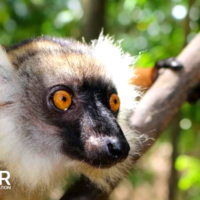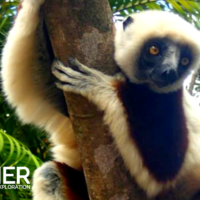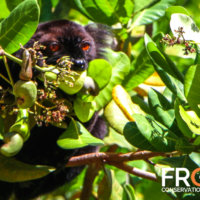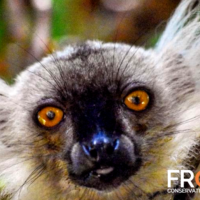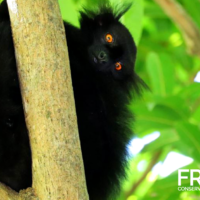Frontier’s research programme in Madagascar features three core surveys: monitoring the populations of lemuriformes, herpetiles and avifauna; and examining the impact of habitat degradation on their diversity. The avifauna is monitored using point count surveys, while lemuriformes and herpetiles are studied using transect surveys.
Frontier conducts research in the South-East of Nosy Be, Madagascar’s largest offshore island, next to Lokobe National Park.
Frontier’s research area therefore contains a variety of terrestrial habitats, including both primary native forest and heavily degraded areas; each habitat type is well represented across thirteen transects, each 400 metres in length making the area suitable for observation and research.
Surveys are needed to understand the different lemur species
Although Madagascar is home to over 100 species of lemur (Wildlife of Madagascar 2016), there are only 3 species endemic to Nosy be:
- the black lemur (Eulemur macaco macaco),
- the Hawk’s sportive lemur (Lepilemur tymerlachsonorum), and
- the Clair’s mouse lemur (Microcebus mamiratra).
Each species possesses certain features and behaviours which distinguishes it from the others. For instance, whilst the Hawk’s sportive lemur and the Clair’s mouse lemur are nocturnal and are found in relatively small groups, the black lemur is diurnal and more sociable.
Such discrepancies mean that the respective species may respond differently to stimuli, like human disturbance or environmental catastrophe.
Thus, through conducting surveys, Frontier endeavours to determine if lemuriform abundance in the research area varies as a function, firstly, of habitat type and, secondly, of human disturbance. And, the surveys study the extent to which these factors impact each species.
Black Lemur is More Impacted by Human Disturbance than the Hawk’s Sportive Lemur
One particular survey (quarter 184), conducted between October and December of 2018, found that the black lemur is more adversely affected by human disturbance than the Hawk’s sportive lemur.
Research Methods
Lemur surveys were conducted along nine pre-existing 400m routes running through the research area. Teams of research staff walked along these routes at a regular pace of roughly 500 m/per hour, visually scanning the path and surrounding area for lemurs. When an individual was spotted the survey leader identified the species, confirming the group size and measurements. The survey was undertaken 9 times diurnally and 12 times nocturnally on degraded, secondary, and primary forest.
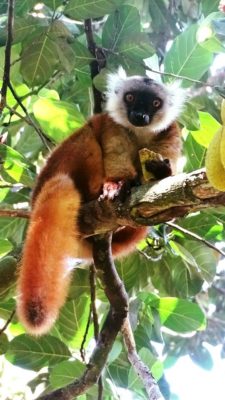
Results of Frontier’s Research
Results showed that whilst Hawk’s sportive lemurs were generally found more frequently on degraded and secondary forest routes than on primary routes, black lemurs were found significantly more frequently on primary forest routes than secondary or degraded routes.
The findings for phase 191 of the survey are somewhat similar in that Hawk’s sportive lemurs were observed most frequently on degraded routes (7.63 ± 3.71 per survey), whilst mouse lemurs were most often observed on primary routes (0.80±1.17 per survey). This would seem to suggest that Hawk’s sportive lemurs are more resilient to human disturbance and habitat degradation than black lemurs and mouse lemurs, who prefer a forest habitat with denser canopies.
Moreover, such findings support the black lemur and the Clair’s mouse lemur’s status as critically endangered, owing to the degradation of their habitat by humans.
These conclusions, if confirmed, could be vital to future conservation of these species, manifesting the value of Frontier’s research.
How to Help
- Become a volunteer at Frontier Madagascar!
- Learn more about Frontier on their LCN profile page.


